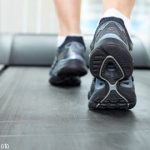Over the past several years, not many new pharmacological interventions have been introduced. Duloxetine has been shown in trials to improve pain and function significantly compared to placebo, and is a good option for some patients, Dr. Shakoor said.
“I find duloxetine very useful in my patient population,” she said. “I’ve had some really great success with it. It’s a great option for patients who may have OA plus fibromyalgia or spinal stenosis and neuropathy and a great addition to other agents we might be using to treat their pain.”
Topical nonsteroidal antiinflammatory drugs (NSAIDs) have also come into use, demonstrating less than 5% of the concentration in plasma of that seen in oral NSAIDs. They might be a good option for patients for whom physicians are reluctant to prescribe long-term oral NSAIDs.
When a drug inhibits the Jak/STAT pathway, multiple cytokines are being inhibited, & the clinical upshot of that scope of inhibition is not yet known.
But Dr. Shakoor emphasized the importance of nonpharmacological interventions as well—not just physical therapy, but also exercise and weight management. She has studied the biomechanics of the knee joint extensively and suggested that interventions lessening the load on the knee joint could help delay disease progression.
Some movement and force on the joint are necessary for nutrients to be distributed, but too much force can lead to degeneration and damage.
“We believe it’s these forces when you’re moving every day and ambulating that are really important in terms of OA process and degeneration,” Dr. Shakoor said.
The “peak external knee adduction moment,” measured through gait analysis, is a primary predictor of load over the medial compartment of the knee and is associated with OA severity progression.
“[Because] this is associated with OA progression, if we can actually lower this load, we may be able to delay progression of osteoarthritis,” Dr. Shakoor said. She added that this is not yet proven, but is the main motivation behind her study in this area.
A brace—the valgus/unloading knee brace—can be one way to lessen these loads, although many patients find it too bulky and cumbersome.
Studies have found that bulky shoes that insulate the foot put more load on the knee joint, likely because they insulate the foot from the footfalls and because there is less use of the body’s natural reflexes to lessen hard impact.
Her lab has found that a flatter, lightweight shoe called a “mobility shoe”—with cuts in the sole to mimic the natural bends of the bare foot—brought about a 17% reduction in knee joint loads in six months compared with subjects’ usual shoes. A similar lightweight shoe is being studied in Italy and elsewhere.


